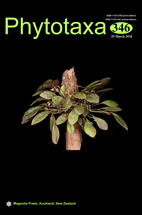Abstract
Solidago litoralis (Asteraceae) is a psammophile plant endemic to the northern coasts of Tuscany, Italy. During time, different authors have considered it either as a separate species, subspecies or variety of the European S. virgaurea, but few studies of experimental taxonomy have been investigating the relationship between these two taxa. Aim of this study is to compare S. litoralis and S. virgaurea from different points of view: cytogenetic (karyotype analysis, localization of rDNA loci and genome size estimation), molecular (using two plastidial molecular markers), and ecological (by comparing functional characters). A difference in ecological responses to habitats is confirmed, even though S. virgaurea is potentially capable of assuming ecological strategies similar to those of S. litoralis. Despite this, cytogenetic and molecular analyses failed to reveal any significant difference supporting a specific distinction of S. litoralis. The latter taxon is here hypothesized as being an ecotype at the initial steps of a speciation event, better recognized at subspecific level (S. virgaurea subsp. litoralis).

